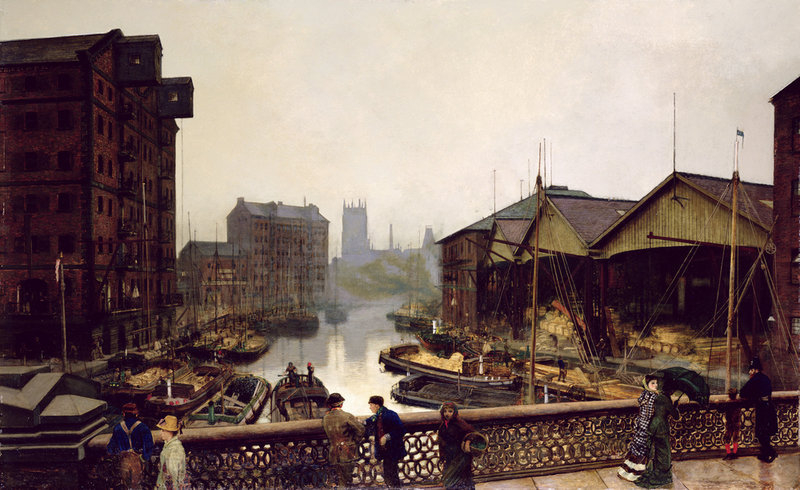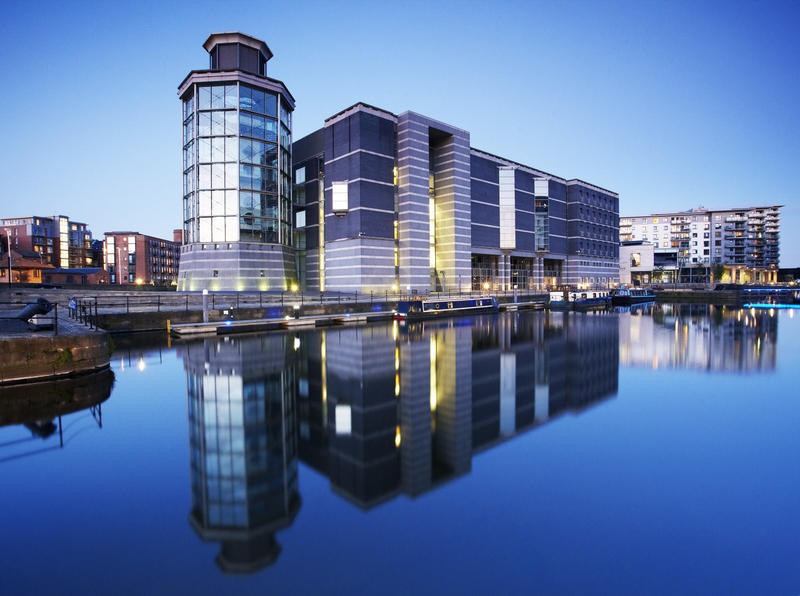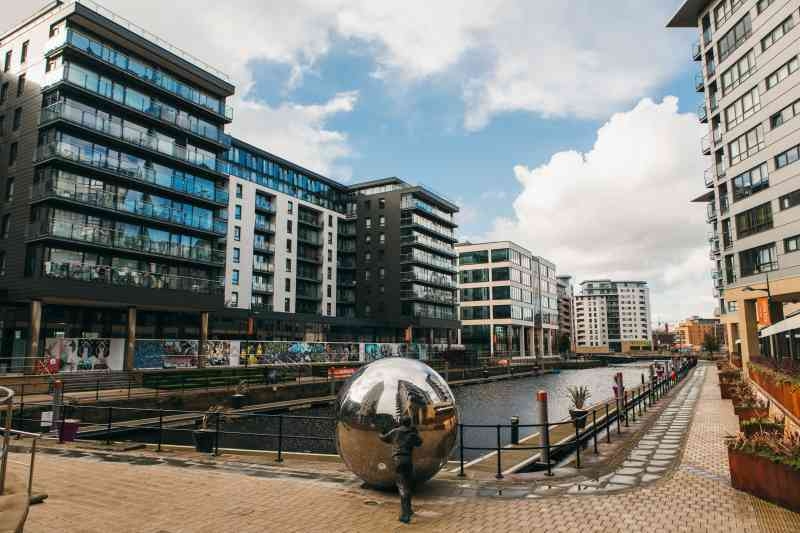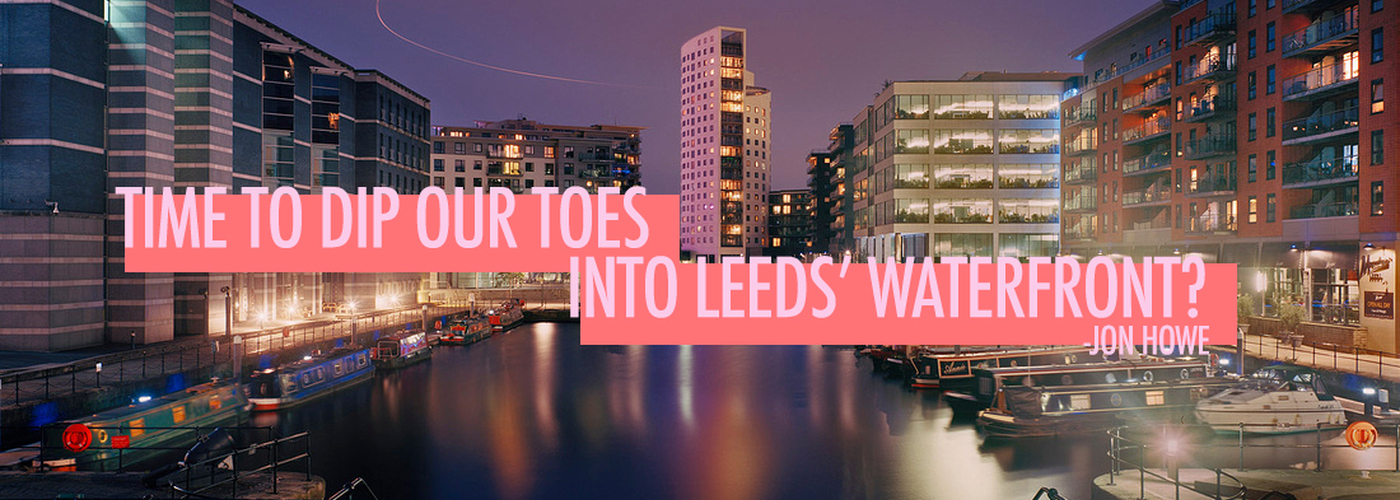If development and digital hubs can't invigorate the neglected area, maybe booze can...
The view from Leeds Bridge down the River Aire is one of the most iconic panoramas in the city; whichever direction you look, and in whichever era you have stood there to soak it in. The Leeds waterfront itself though has been bedevilled by changing identity for hundreds of years, and that continues today.
Where now you see the towering prosperity of Bridgewater Place and the urbane calm of city centre living, there was once the infernal vision of a city stained by an industrial past. Back then, the Leeds waterfront was like a back alley outlet for the city’s discharge, while its inhabitants busied themselves creating vast concrete enclaves and motorway escapism.

Out of sight out of mind, perhaps. Unless you stood on Leeds Bridge; a conduit to 17th-century revolution, rebuilt in 1870 as a cast iron emblem of Leeds - complete with the city crest and an ornamental balustrade. It stood proudly as an entrance to the city but watched over a slow, sorry decline in the river landscape.
The Dark Arches and Granary Wharf may now reverberate to the ceaseless pounding of heavy footfall, but that wasn’t always the case, and then there is the curious identity crisis at the other bookend of the waterfront stretch.

The 1996 opening of the £42.5million purpose-built Royal Armouries Museum brought attention to the area now known as Leeds Dock, but widespread regeneration had begun four years prior, with the construction of the Centenary Bridge, allowing pedestrian access between The Calls and what is now Brewery Wharf.
Since then the waterfront has taken on a significantly more refined air, the perfect canvas to showcase the city’s determination to embrace its industrial heritage while pressing on relentlessly with 21st century living at a hedonistic pace. However today, the area stands out as one of Leeds’ very rare less-than-successful gentrification projects.
Whether known as Clarence Dock, New Dock, or, as now, simply Leeds Dock, the vast expanse of the area remains ripe for a wide scale infiltration by something nobody can quite put their finger on, leaving Leeds Dock looking like an estranged ghost town.

Leeds parties on elsewhere, while the dock sits at the living room window, wondering if everybody’s invitation got lost in the post; taunted by decorations for a party that nobody turned up to.
There has always been sufficient residential footfall, but somehow the major businesses have failed to buy into the ‘Royal Armouries effect’, and while its historical neglect has not been for the want of trying, everything now seems to be in place for the area to finally take off. Perhaps the Dock area would be a good place for the child-focused attraction that Leeds city centre lacks?
Or maybe it’s already organically developing as one of Leeds’ digital hubs? Event space has been developed in the New Dock Hall – which has hosted parts of the Leeds Digital Festival recently – Sky TV has plush office space - as well as various creative tech organisations.
With the South Bank Development gathering pace, it seems that the Leeds Dock area will finally have its day, and we may be tempted a little further from the city centre, over the imaginary barrier that prevents us venturing past Centenary Bridge. The website rightly champions the arresting stretch of Leeds, dubbing the area that’s traditionally been criminally undersold as a “creative, waterside community for working, socialising and well-being”.

The Leeds Waterfront Festival does its best to nurse us tentatively towards the lapping riverbanks. Celebrating its 10th year in 2017, the 9-site celebration brings food, games, boat trips, live music and outdoor events to the waterfront for two days, this year on Saturday 24 and Sunday 25 June.
While its famous Dragon Boat race briefly brings life to the Dock area that’s short-lived, the social enterprise that makes it happen - and the 30,000 plus attendees of the festival - do keep coming back, so there is a determination to somehow crack it.

As with most areas of Leeds, it might just take the city’s insatiable appetite for bar culture to finally make it click.
Bars like Calls Landing, Aire Bar, and Oracle, offer us some prime examples of what Leeds does best, and further along we have the polished plaza of Granary Wharf - aided considerably by the magnetic hub of the rail station - with Candlebar, Archies and The Hop.
They’ve recently been joined by the Water Lane Boathouse, a surprise addition to the Headrow House & Belgrave Music Hall family, who have a track record of turning neglected plots into thriving destination venues. In this sense, the Leeds waterfront couldn’t be more alive.
Just as the free water taxis chug back and forth between Leeds Dock and Granary Wharf, quietly reminding us that both extremities do exist, Leeds waterfront remains a central part of Leeds - not just physically, but also in terms of its culture, its tranquil and serene refinement on a sunny afternoon, and in the city’s persistent will to make the most of it.
Main image: Richard Ellis



